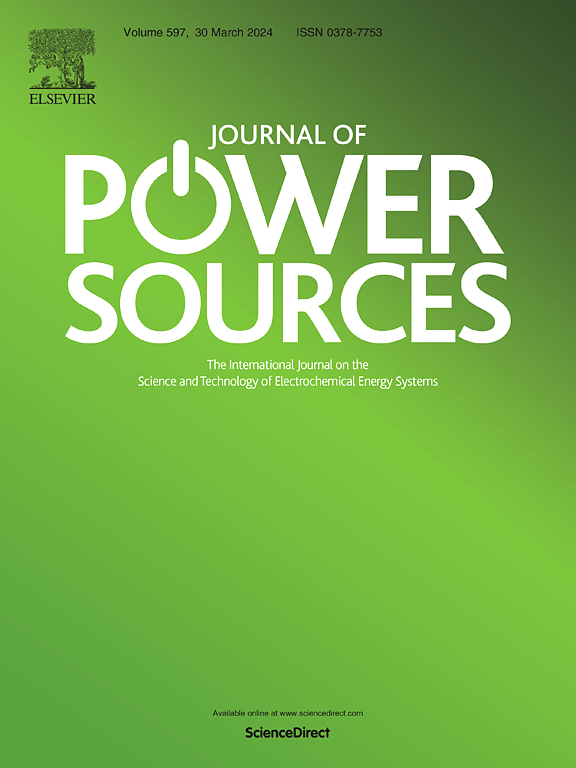Iron-assisted molten salt synthesis of highly graphitized hierarchical porous N-doped carbon for enhanced aqueous energy storage
IF 8.1
2区 工程技术
Q1 CHEMISTRY, PHYSICAL
引用次数: 0
Abstract
The development of advanced carbon electrodes with high conductivity and a large specific surface area is crucial for electrochemical energy storage applications. In this work, we propose an iron-assisted molten salt (NaCl) strategy to fabricate highly graphitized hierarchical porous N-doped carbon (GHPNC) as an efficient electrode for high-performance supercapacitors. Ferric chloride (FeCl3) is employed as an activator to promote the formation of a micro-mesoporous structure, while NaCl and the resulting iron oxide facilitate the development of macropores. The optimized GHPNC-5.0-1.0 sample (where 5.0 represents the FeCl3-to-carbon precursor mass ratio and 1.0 denotes the NaCl-to-carbon precursor mass ratio) exhibits a well-developed hierarchical porous structure and high graphitization, leading to excellent electrochemical performance. In a 6 M KOH electrolyte, the GHPNC-5.0-1.0 electrode achieves a capacitance of 201.5 F g−1 at 0.5 A g−1. A symmetric supercapacitor (SSC) assembled with this electrode delivers an energy density of 9.84 Wh kg−1 at a power density of 250.17 W kg−1. In a 2 M ZnSO4 electrolyte, the GHPNC-5.0-1.0//Zn hybrid supercapacitor (ZHSC) demonstrates an energy density of 79.87 Wh kg−1 at 625 W kg−1. Notably, the ZHSC exhibits outstanding cycling stability, retaining nearly 100 % of its capacitance after 10,000 cycles.

求助全文
约1分钟内获得全文
求助全文
来源期刊

Journal of Power Sources
工程技术-电化学
CiteScore
16.40
自引率
6.50%
发文量
1249
审稿时长
36 days
期刊介绍:
The Journal of Power Sources is a publication catering to researchers and technologists interested in various aspects of the science, technology, and applications of electrochemical power sources. It covers original research and reviews on primary and secondary batteries, fuel cells, supercapacitors, and photo-electrochemical cells.
Topics considered include the research, development and applications of nanomaterials and novel componentry for these devices. Examples of applications of these electrochemical power sources include:
• Portable electronics
• Electric and Hybrid Electric Vehicles
• Uninterruptible Power Supply (UPS) systems
• Storage of renewable energy
• Satellites and deep space probes
• Boats and ships, drones and aircrafts
• Wearable energy storage systems
 求助内容:
求助内容: 应助结果提醒方式:
应助结果提醒方式:


